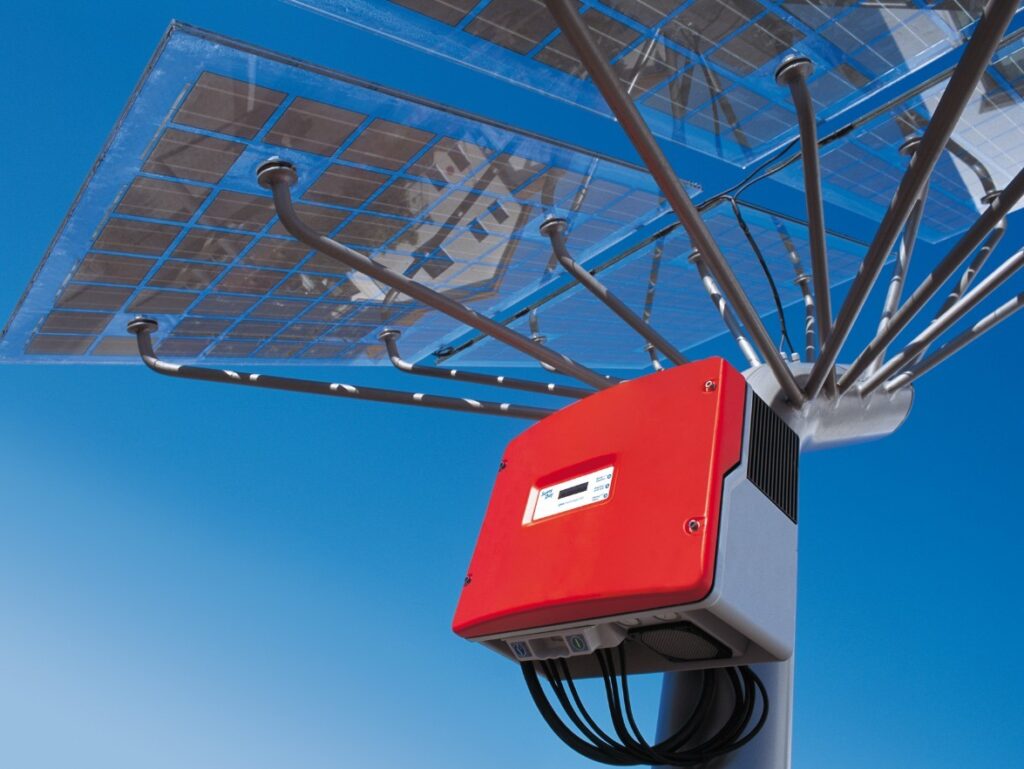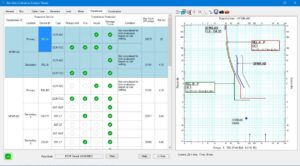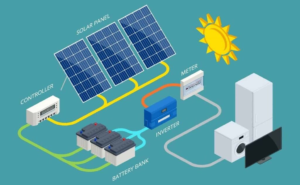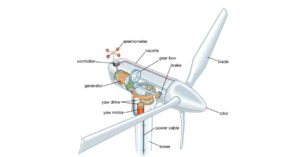Inverter controls in AC microgrid allows delivering distributed power and providing grid support services during regular operation of the grid. It also allows the powering isolated islands in case of faults/contingencies to increase the performance and reliability of electrical system.
Classification of Inverters/Converters in AC Microgrid
- Grid-Forming
- Grid-Feeding
- Grid-Supporting
Grid-Forming Inverters
The grid-forming converters can be represented as an ideal ac voltage source with a low-output impedance, setting the voltage amplitude E” and frequency ω” of the local grid by using a proper control loop.

Grid-Feeding Inverters
On the other hand, the grid-feeding power converters are mainly designed to deliver power to an energized grid. They can be represented as an ideal current source connected to the grid in parallel with high impedance. Here, P* and Q* represent the active and the reactive powers to be delivered respectively:

In this application, it is important to outline that this current source should be perfectly synchronized with the ac voltage at the connection point, in order to regulate accurately the active and reactive power exchanged with the grid.
Grid-Supporting Inverters
Finally, the grid-supporting converters can be represented either as an ideal ac-controlled current source in parallel with a shunt impedance, or as an ideal ac voltage source in series with a link impedance as per below figures:


These converters regulate their output current/voltage to keep the value of the grid frequency and voltage amplitude close to their rated values. In case of controlling a grid-supporting converter as a voltage source, the effect of the link impedance is usually emulated by the internal control loop.
Summary
A grid-feeding power converter, controlled as a current source, needs a generator or a power converter to form the grid voltage in order to be able to operate. Therefore, this kind of converter cannot operate independently in island mode.
On the contrary, a grid-forming power converter usually operates specifically in islanded mode. The reason being that the main grid the ac voltage is conventionally formed by synchronous generators.
A grid-supporting power converter is in between a grid-feeding and a grid-forming power converter. Its main objective is to deliver proper values of active and reactive power for the regulation of the grid frequency and the voltage.
In case of implementing it as current source, as shown in Fig. (c), it needs at least one grid former to operate. However, if it is controlled as a voltage source with link impedance, as detailed in Fig. (d), it can operate in both grid-connected and island mode, as a synchronous generators does in a conventional grid.







